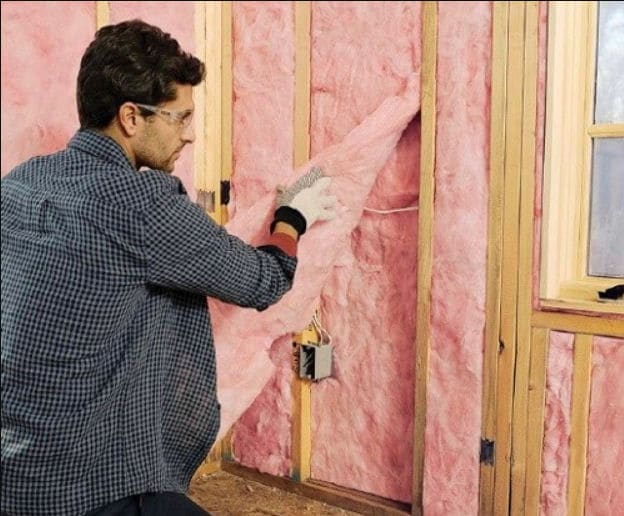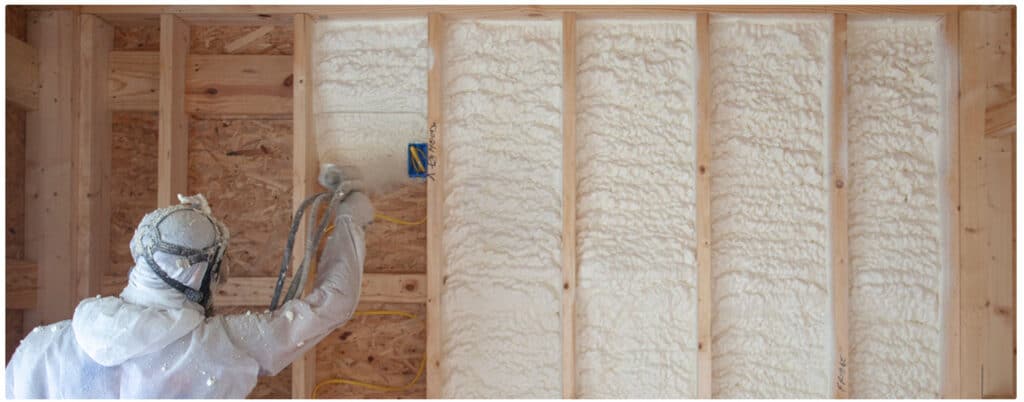11 Dec Choosing the Best Insulation for Your New Home
Choosing the Best Insulation for Your New Home

As winter approaches, the choice of home insulation is bound to come to mind. There
are a number of options on the market, which can get a bit confusing. Let’s review
popular insulation choices, and how to make the best choice for those long, cold New
York winters.
How Insulation Protects Your Home
Let’s look at how insulation works to reduce energy costs and to keep you warm in the
winter and cool in the summer. The best-case scenario for your home is to maintain a
comfortable temperature at all times. This is achieved by using your HVAC system to
blow in warm air to displace cold in the winter and cool air to displace hot in the
summer. To avoid the system working overtime, having the right insulation in your home
decreases air flow from the outdoors by providing a barrier of resistance.
Home insulation is rated by an R-value, which is based on the material’s thermal
resistance. That includes conductive heat transfer, radiant heat transfer and convective
heat transfer. There are different recommendations about the R-value needed for
different areas of a home. For example, the R-value recommendation for ceiling
insulation has increased in recent years to R-38, but the recommended R-value for
walls and floors is lower.
All of New York’s Hudson River Valley falls in either zone 5 or 6. These two zones have
similar insulation R-value requirements. Columbia Home Solutions offers expert
guidance in choosing the right insulation. They offer the use of traditional fiberglass
batts or spray foam insulation in their new homes.
Traditional Fiberglass Batts:

When most people think about insulation, the product pictured in their head resembles a
traditional fiberglass batt. It comes in pre-cut pieces that fit into the spaces in the wood
frame, or for larger or irregular spaces it can be purchased in longer rolls that can be cut
to the length needed. This type of insulation provides affordable, high quality insulation
for walls, ceilings and floors. It is most often used to control the temperature of your
home, but also it can improve acoustics and lower energy costs. Let’s look at why you
should or should not choose traditional fiberglass batt insulation.
Advantages:
● As mentioned above, it is both an inexpensive and effective insulation solution.
● Being made of fiberglass, the insulation will not shrink over time.
● Bug resistant. It does not provide an appetizing meal for insects because
fiberglass contains no nutrients for them.
● Fiberglass material does not burn.
● Fiberglass batts are generally wrapped in Kraft paper, which can act as a
moisture barrier and protect the insulation from potential problems, like rot and
mildew.
Disadvantages:
● When working around fiberglass batt insulation, you must take safety
precautions. These can include using gloves to avoid slivers of fiberglass
embedding in your hands. Also, a respirator should be worn to prevent inhalation
of the same fibers. This can come into play if you have any future improvement
plans for your home.
Spray Foam Insulation:

Production of spray foam insulation requires the combination of two materials,
isocyanate and polyol resin. Mixing the two liquids causes a reaction that expands its
volume into a foam, which can occupy 30-60 times its liquid volume. The produced
foam expands to fill even the smallest areas, so it makes sense it would be adopted as
insulation against the weather. In fact, this material has been in use for decades to
protect from the elements, starting with the manufacture of airplanes in the 1940s. It
was adapted for home insulation use in the late 1970s.
Spray foam insulation is another option offered by Columbia Home Solutions. It’s a
great choice for a cold New York winter because it does expand into every nook and
cranny of your walls, ceilings and floor, thus blocking most of the airflow from outside.
Let’s look at some advantages and disadvantages of spray foam insulation.
Advantages:
● Spray foam insulation has a high R-value per inch, compared to typical fiberglass
insulation.
● It is available in a range of densities and cell structure, and higher density or
closed-cell foam is recommended for home insulation.
● All three forms of heat transfer are blocked by spray foam insulation.
● Buildings treated with spray foam insulation can offer energy cost savings as
much as 30%.
● Foam insulation itself offers protection against moisture without requiring a vapor
barrier.
Disadvantages:
● The upfront cost of spray foam insulation can be significantly higher than
traditional fiberglass batt insulation.
● It takes anywhere from two to four years to see a return on your investment.
Traditional Fiberglass Batt or Spray Foam Insulation: The Choice
Your choice may come down to something as simple as price. Both offer sizable
protection for your home’s interior from the elements and will make your home more
energy efficient. This energy efficiency will save you money in the long run, though that
may take a bit longer with the extra upfront expense of spray foam. However, the spray
foam insulation may give you somewhat more protection and be more energy efficient,
plus its natural moisture blocking offers added value.
Columbia Home Solutions Offers Choices
As with any new home build, using this information before making an insulation choice
for a new modular home from Columbia Home Solutions will guide you to the perfect
product to achieve your home energy goals. Whatever choice you make for your home,
you can be sure that Columbia Home Solutions in New York’s Hudson Valley will work
with you to insulate it properly. Contact them today to find out more.
